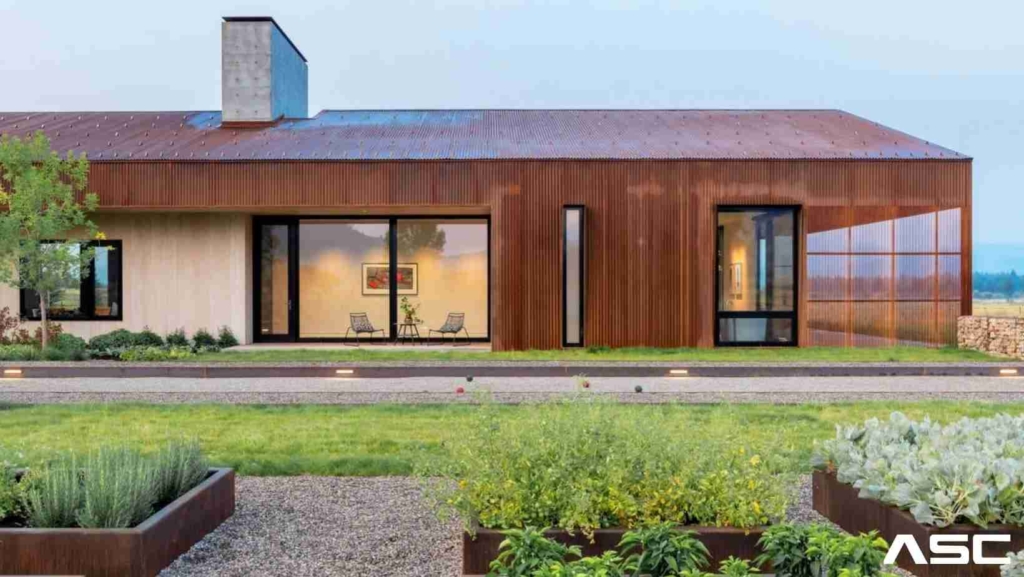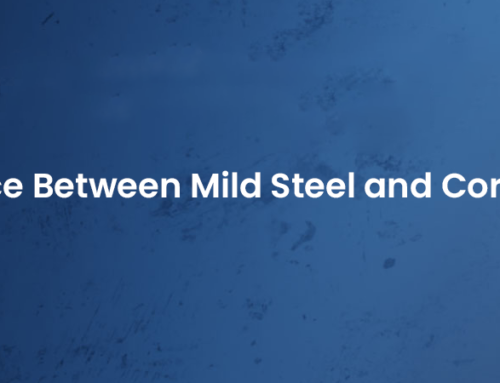
For a long time, corten steel cladding has been popular in construction. It is a type of weathering steel that was developed in Germany. Rust-resistant, durable, and silvery-gray in color. With the exception of decorative profiles, the cladding can be applied to any type of steel construction. A corten steel joint is usually bolted together with flanges on the ends and no visible joint will be present unless it is very tight.
This cladding is so popular because it can be easily installed, repaired, and removed without any hassle. Additionally, it reduces energy costs and enhances the appearance of buildings. What is the process of cladding installation?
Building types require different types of cladding installations. A company that specializes in this type of work usually performs the installation. For proper installation and use, you will need a licensed contractor and the manufacturer’s instructions.
Commercial, residential, educational, and industrial buildings have used corten steel cladding over the years. Corten steel cladding is not only durable and strong, but also has aesthetic qualities that make it popular in many applications. A clear protective coat prevents the steel from oxidizing, preventing rusting.
Corrosion resistance is usually the main consideration when choosing it. Corten steel cladding enhances appearance and can be used in unique architectural designs. It has a distinctive rust-like patina that develops over time. Due to its natural patina, it is especially suited to buildings with an industrial or urban aesthetic.

Corten steel cladding is a type of steel cladding used on buildings. An aluminum layer covers the surface and a zinc layer covers the inside. Compared to other types of cladding, this material is more durable and less likely to corrode or rust. One of the toughest materials available for use in construction is corten steel cladding.
The hardest part of this material is its natural resistance to corrosion and rust. Structures that are heavy can be supported by it because it can withstand a lot of weight. As a metal, it is also easy to work with and comes in a variety of colors. Steel cladding used in buildings is called corten steel cladding. The surface has a layer of aluminum and the interior has a layer of zinc. Compared to other types of cladding, this material is more durable and less likely to corrode.
Corten steel cladding has become increasingly popular in recent years as it offers a more durable solution than other types. Due to its hard chromium oxide scale that forms on the surface when exposed to atmospheric conditions, it has high corrosion resistance.
Because of its unique appearance and durability, corten steel cladding has gained popularity in recent years. Cladding made from corten steel is characterized by its rough appearance, rust-resistant properties, and sustainability. Its aesthetic properties make it suitable for applications that place a high value on aesthetics. Colors such as red, blue, yellow, green and more can be made despite its appearance.
Due to its unique appearance and durability, corten steel cladding has gained popularity in recent years. Corten steel cladding has a rough surface finish that gives it a unique appearance. It has been used to clad buildings around the world, as well as for architectural designs. A bridge’s density is measured in pounds per square inch (psi).
What are the uses of corten steel cladding in the UK?
Various locations in the UK use Corten steel cladding. The following are some examples of places in the UK where Corten steel cladding is commonly used:
- Due to its weathered appearance and durability, Corten steel cladding is a popular choice for building facades.
- Weather-resistant properties of Corten steel make it an excellent material for outdoor sculptures and artwork.
- As a result of its high strength and corrosion resistance, Corten steel is often used in the construction of bridges.
- A variety of landscaping features can be created with corten steel, including planters, retaining walls, and water features.
In the UK, you can find suppliers and manufacturers of Corten steel cladding by searching online directories or contacting a professional architect or builder. Furthermore, Corten steel cladding products are available at many construction and building supply stores.
Advantages of corten steel claddings in the UK
Corten steel cladding in the UK offers a number of advantages, including:
- Weather-resistant: Corten steel develops a protective layer of rust over time, which prevents further corrosion. Considering the harsh and unpredictable climate in the UK, this makes it an excellent choice.
- Aesthetic appeal: Corten steel has a weathered appearance that can add interest to buildings, sculptures, and other structures. A variety of architectural styles can be complemented by Corten steel’s rich, rusted color.
- Corten steel is a highly durable material that can withstand harsh weather conditions and heavy usage. As a result, it is an excellent choice for public spaces and high-traffic areas.
- Corten steel requires very little maintenance since the protective layer of rust that forms on its surface prevents further corrosion. The life of a structure can be saved both in terms of time and money by using this method.
The benefits of Corten steel cladding make it an excellent choice for a wide range of UK applications.
The disadvantages of corten steel claddings in the UK
There are many advantages to using Corten steel cladding in the UK, but there are also some potential disadvantages. Among them are:
- For those on a tight budget, corten steel may be more expensive than other building materials.
- The rusted appearance of Corten steel can be appealing, but it can also cause rust stains on nearby surfaces. If the building is located in an area with strict maintenance regulations or has a light-colored facade, this may be a concern.
- Although Corten steel is becoming more popular, it may still be hard to find in certain areas of the UK. As a result, architects and builders who wish to use this material may have fewer options.
- Environmental concerns: Corten steel is energy-intensive to produce and has a higher carbon footprint than other building materials. If you are trying to reduce your environmental impact, this may be a concern.
Although Corten steel cladding can have some potential drawbacks in the UK, these can be mitigated with careful planning and design. If architects and builders weigh the pros and cons of this material, they can decide if it is the right choice for their project.








Leave A Comment